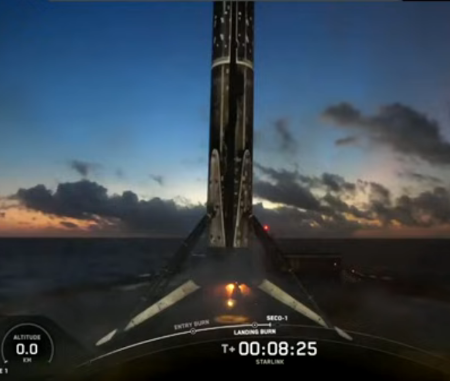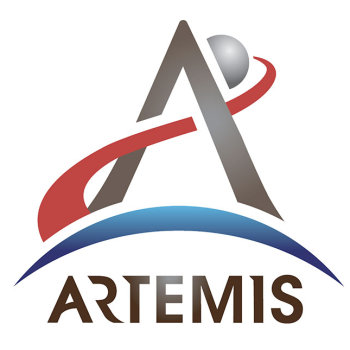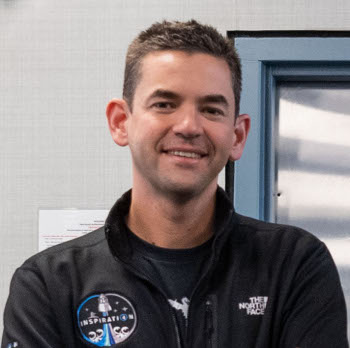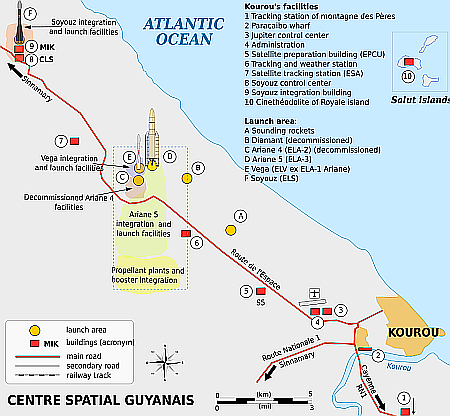Starlab assembles a full scale mock up of its proposed space station

Starlab design as of November 2025. Click for original
The consortium that is building the Starlab space station designed to be launched as a single large module on a SpaceX Starship rocket has now assembled a full scale mock up of that module at the Johnson Space Center in order to test the interior design and perform training exercises.
The Starlab space station mockup has three “floors” – or HAB1, HAB2 and HAB3. The first floor of the Starlab station, HAB1, will house life support systems, exercise equipment, a hygiene area for astronauts and two toilets. [Courtenay McMillan, mission segment lead for Starlab Space,] said the extra toilet is especially important for the roughly 1,600-square-foot station that’s about the size of a two-bedroom house. “Two toilets is a big deal,” McMillan said. “Anyone who has ever gone on a house hunt knows how important this is.”
The second floor of the station, HAB2, is where most of the research will occur. The mockup currently has graphics that show where plants could grow and experiments could be stored. McMillan said the mockup could eventually have a functional workbench, glovebox and other research hardware to train crew members on conducting research in space.
The top floor, HAB3, is where the crew will live. It will have eight beds split among two quadrants, with four bunks each. The Starlab station is expected to house four crew members for six months, and its occupancy would increase to eight people during crew handovers or when shorter two-week missions join the long-duration crew.
In many ways this mock-up is a variation of a game a lot of big space contractors play to make it seem they are doing something in order to increase the chance they will win a contract from NASA. In some cases, these big contractors (such as Boeing with Starliner) do practically nothing but showpieces with no real substance until the contract is awarded, and then have to play catch up (which in the case of Starliner turned out to be a disaster).
In this case I am less cynical. The Starlab consortium, led by Voyager Space (but includes a lot of major companies and international partners), seems here to be doing the right due diligence. This mock-up is not a show-piece, but an engineering model that engineers intend to use extensively to test and revise the station’s interior design. It appears to be part of an overall plan that now includes one American subcontractor to build the station’s hull, another to design the interior, and a third to integrate everything for launch.
Though I have not yet changed my rankings below of the four American space stations under development, my impression of Starlab continues to go up, so that it now ranks below Axiom by only a very tiny amount.
» Read more

Starlab design as of November 2025. Click for original
The consortium that is building the Starlab space station designed to be launched as a single large module on a SpaceX Starship rocket has now assembled a full scale mock up of that module at the Johnson Space Center in order to test the interior design and perform training exercises.
The Starlab space station mockup has three “floors” – or HAB1, HAB2 and HAB3. The first floor of the Starlab station, HAB1, will house life support systems, exercise equipment, a hygiene area for astronauts and two toilets. [Courtenay McMillan, mission segment lead for Starlab Space,] said the extra toilet is especially important for the roughly 1,600-square-foot station that’s about the size of a two-bedroom house. “Two toilets is a big deal,” McMillan said. “Anyone who has ever gone on a house hunt knows how important this is.”
The second floor of the station, HAB2, is where most of the research will occur. The mockup currently has graphics that show where plants could grow and experiments could be stored. McMillan said the mockup could eventually have a functional workbench, glovebox and other research hardware to train crew members on conducting research in space.
The top floor, HAB3, is where the crew will live. It will have eight beds split among two quadrants, with four bunks each. The Starlab station is expected to house four crew members for six months, and its occupancy would increase to eight people during crew handovers or when shorter two-week missions join the long-duration crew.
In many ways this mock-up is a variation of a game a lot of big space contractors play to make it seem they are doing something in order to increase the chance they will win a contract from NASA. In some cases, these big contractors (such as Boeing with Starliner) do practically nothing but showpieces with no real substance until the contract is awarded, and then have to play catch up (which in the case of Starliner turned out to be a disaster).
In this case I am less cynical. The Starlab consortium, led by Voyager Space (but includes a lot of major companies and international partners), seems here to be doing the right due diligence. This mock-up is not a show-piece, but an engineering model that engineers intend to use extensively to test and revise the station’s interior design. It appears to be part of an overall plan that now includes one American subcontractor to build the station’s hull, another to design the interior, and a third to integrate everything for launch.
Though I have not yet changed my rankings below of the four American space stations under development, my impression of Starlab continues to go up, so that it now ranks below Axiom by only a very tiny amount.
» Read more












